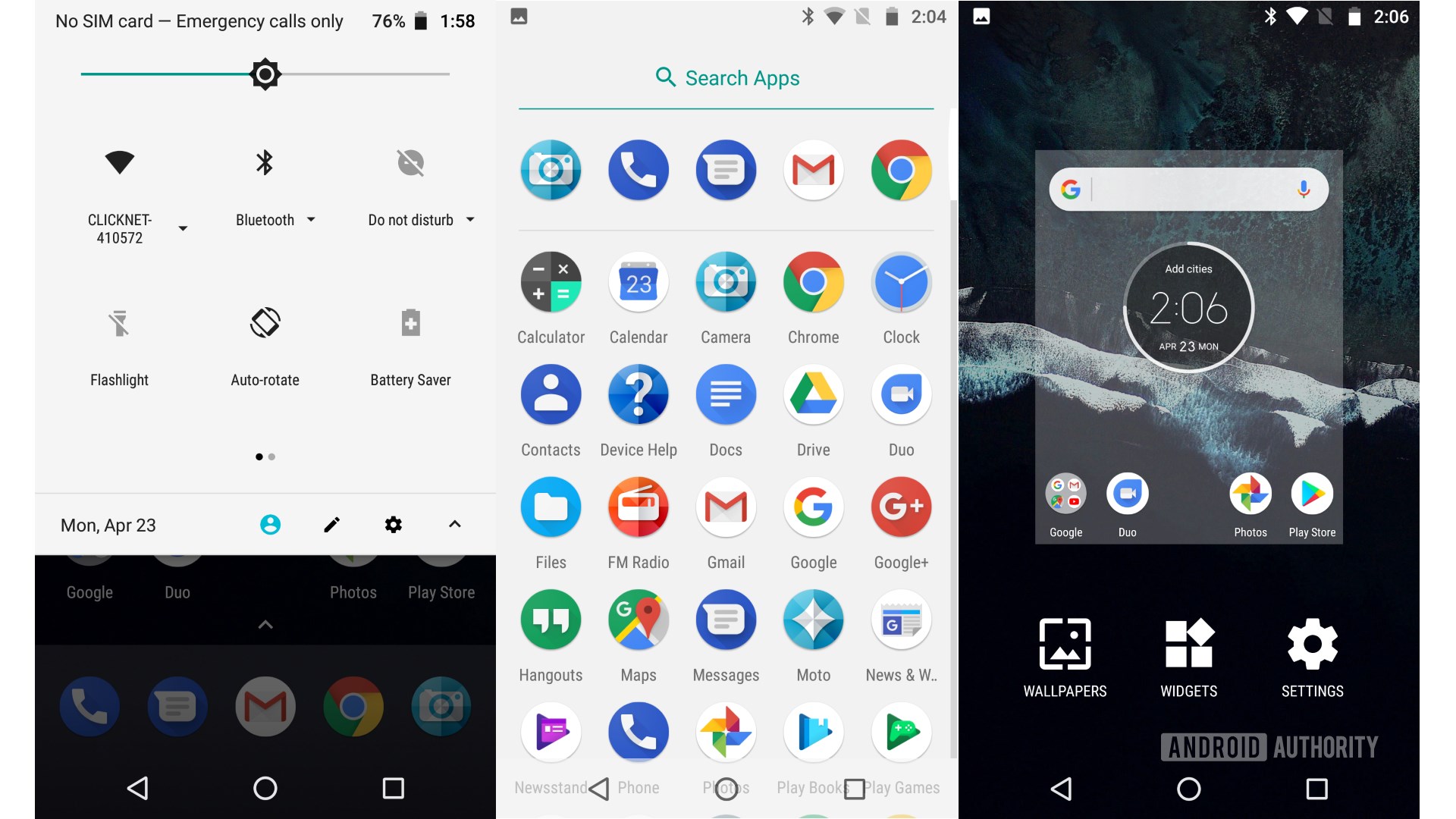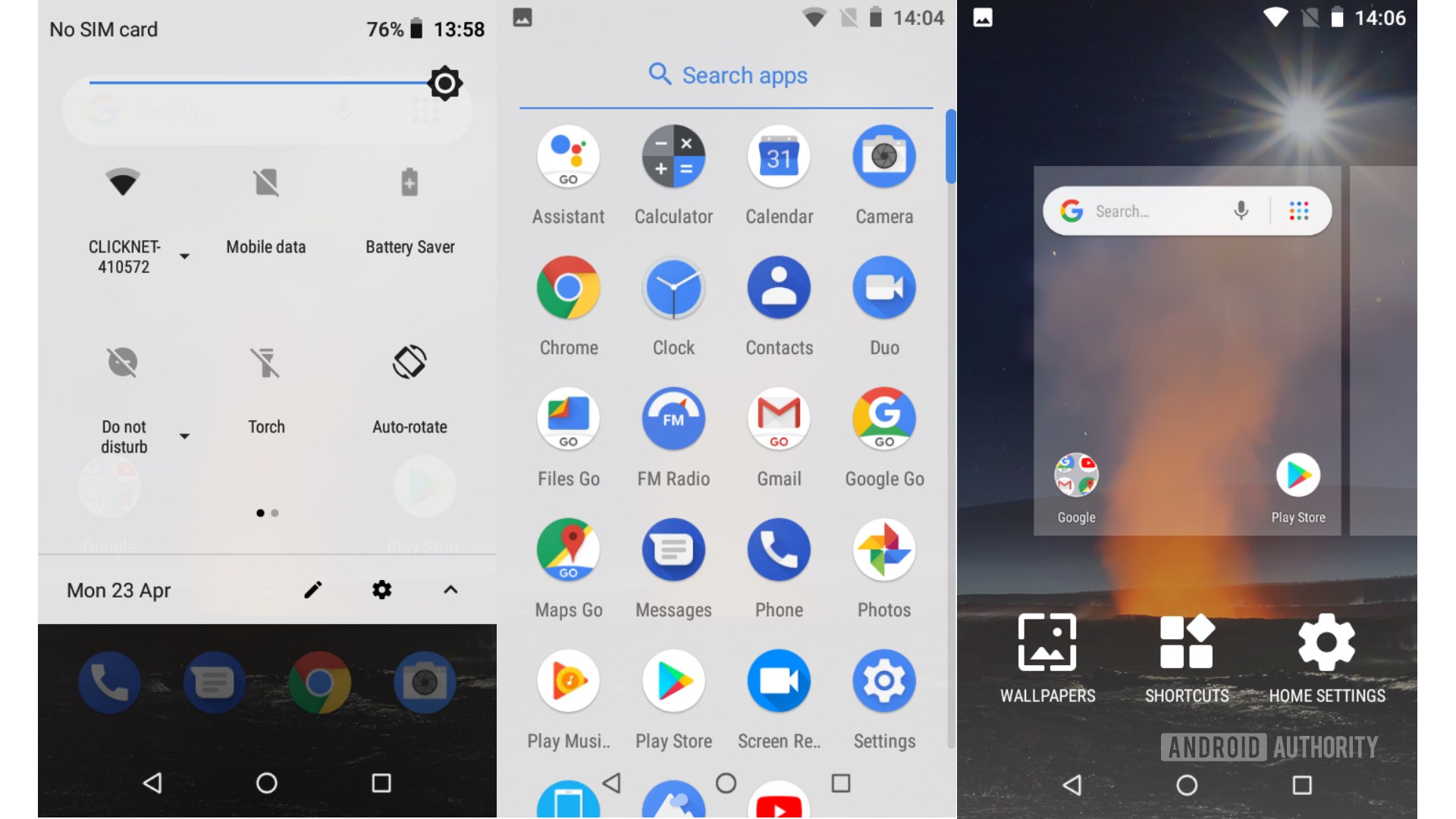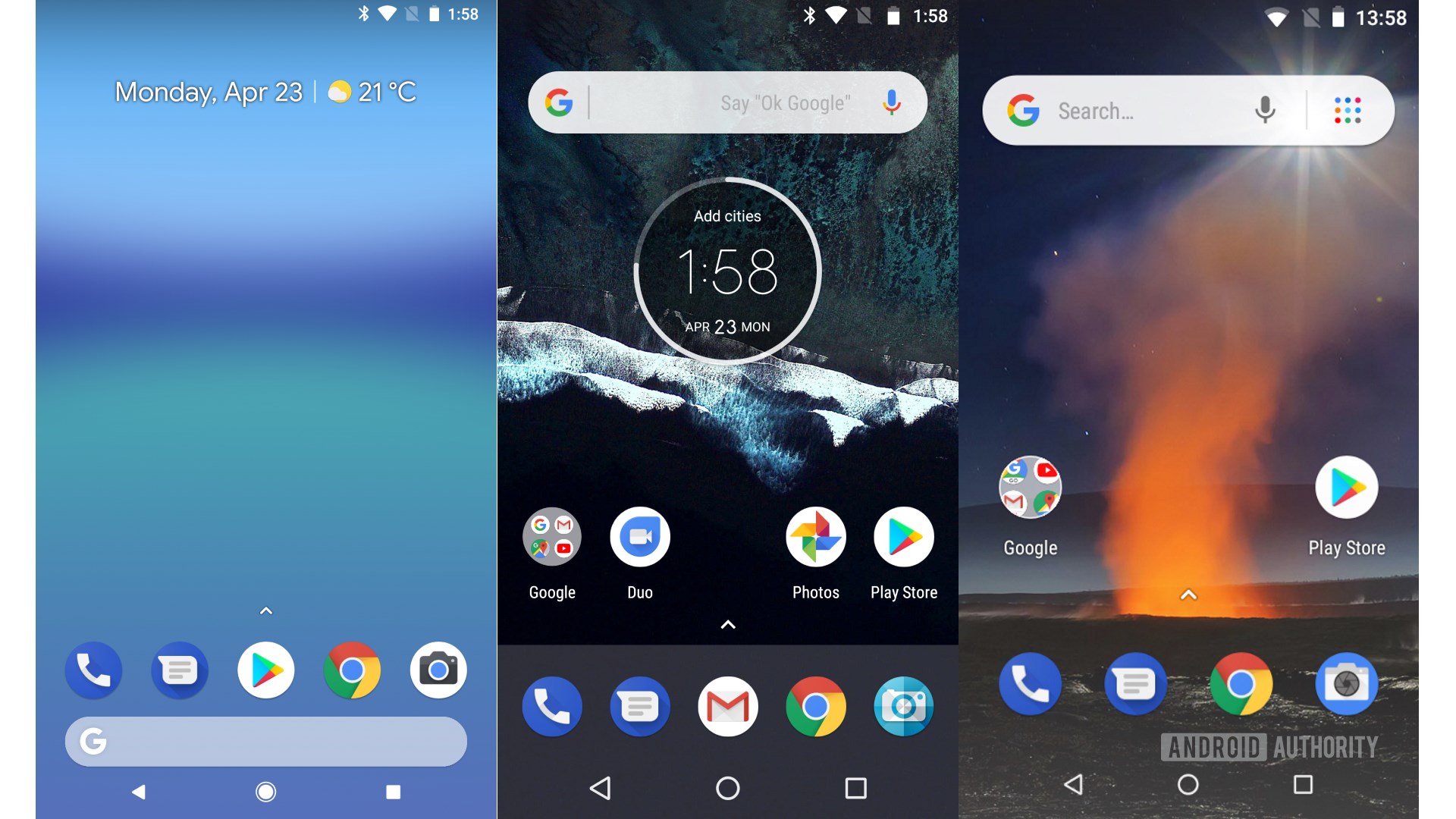Stock Android vs Android One vs Android Go
What's the difference between stock Android, Android One, and Android Go? Each is a flavor of Android, each originates from Google and all have a few things in common. But there are some big differences in the way in which smartphone makers use the open source software, how security updates are released, what pre-installed apps are included, and more. Today we're clearing up any confusion.
Note: For clarity, we're defining stock Android as whatever Google ships on its own hardware. There are obviously differences between the Android found on Nexus phones and that found on Pixels, but given the demise of the Nexus program, we'll be referring to the Pixels' software as stock Android throughout what follows.
The (normal) Android experience
The way it works for a traditional OEM like Samsung or LG or Huawei would be that Google publishes the source code for Android – part of its Android Open Source Project (AOSP) – and then anybody can take that code and build around it for a smartphone or any other development board.
On top of that, Google has services such as the Google Play Store and apps like YouTube and Google Maps, but they're not part of the Android Open Source Project. Therefore to get a 'normal' Android smartphone you need to take the source code from Google, but you also need to have certification so you can use their apps, which is known as Google Mobile Services. Most OEMs add their own variations, skins, or what they see as improvements to the Android OS on their smartphones such as Samsung's TouchWiz (now known as Samsung Experience), Sense from HTC or EMUI from Huawei. Not all of these have been good, but most have become better through the years.
On top of these familiar variations on Android that most people will have used, we also have these three variations of more "pure" Android.
Stock Android
![]()
Historically, stock Android is what you would get on devices in the Nexus line like the Nexus 5x and Nexus 6P. While there were some differences in software between the last Nexuses and the first Pixels, now that the Nexus line has been officially deprecated (barring six remaining months or so of security patches) we'll use the term stock Android to refer to whatever software Google is shipping on its own devices right now.
These devices actually get Android directly from Google, so as soon as there's a change that Google wants to ship out, it comes directly to the phone without delay. Naturally, there's increasing demand for stock Android as it's bloatware-free, gets updated swiftly, and doesn't have anything "extra" from an OEM to slow it down. They're not for everyone and some less technical users may prefer to have a bunch of preinstalled apps to avoid needing to download them on the Play Store, but for enthusiasts and moderately capable users, stock Android has a lot to like.
Android One

Then there's Android One, which was originally launched in India in 2014 and was aimed at low-end phones. Over the years, Android One has actually grown beyond its original purpose to include much higher-end phones than was originally intended, like the Moto X4, which we'll see later.
For devices with Android One, Google actually offers software development services to manufacturers. So perhaps a handset maker is good at building hardware, marketing, and has retail experience, but they're not good at software. In this case, Google offers them Android One and commits to sending updates and security patches for an agreed time period, directly to the handsets.
While there is little said publicly about this, Android One is likely a paid service. Android is, of course, open source, the Android One programme is a service on top of this, so it would make sense that Google charges a fee to OEMs like Nokia, a major partner with Android One, for handling their software needs. If there is a cost, it may be offset in that Google itself benefits from having more users on Android, in turn receiving more traffic to its search engines and using its apps, which allows it to place more ads in front of more users.
Android Go

Finally, there's Android Go. This flavor of Android replaces the original Android One programme and is specifically for low-end devices. It's a cut-down version, so it doesn't have as many pre-installed apps and has deliberately 'lite' or 'Go' versions of Google apps, like Maps Go and Gmail Go, which are aimed specifically at running smoothly on low-end devices.
The big difference between Android Go and Android One is that Android Go doesn't come directly from Google – Google sends it to a maker like Nokia, and then Nokia releases it. This also means that Nokia has to release updates and upgrades when they're pushed out from Google, adding in a delay that isn't there with stock or Android One. Android Go hasn't been seen by many in more developed countries, but that will change over time as it picks up steam.
Stock Android vs Android One vs Android Go: The on-device differences
![]()
To check on the differences between these flavors, we have three devices, each with a different Android variant:
- First is the Google Pixel, which is has got stock Android on it, comes with Android 8.1 Oreo and has security updates including April, and Gary's video was shot in the month of April.
- The Motorola Moto X4 which is an Android One device and that has Android 8.0 Oreo and it has security updates up to March.
- Finally, the Nokia 1, which has Android 8.1 Go on it, but it has security updates only up until January.
There are some cosmetic differences between how each Android version looks, for things like widgets, wallpapers, and colors.

Android One devices such as the Moto X4 come with the most pre-installed apps, like Google Translate. The Pixel has the bare minimum of apps, while the Nokia 1 has very few apps preinstalled (although all apps are, of course, downloadable from the Play Store). It is worth noting some apps are the same, but other apps can be quite different, such as the camera app, which depends on the hardware available to the camera software.
Wrap-up
In a nutshell, stock Android comes directly from Google for Google's hardware like the Pixel range. Google is also responsible for providing updates and upgrades. Android One also comes directly from Google, but this time for non-Google hardware and as with stock Android, Google provides updates and patches. Android Go replaces Android One for low-end phones and provides a more optimized experience for less powerful devices. Unlike the other two flavors, though, the updates and security fixes come via the OEM.
Have you tried a device with Android One or Android Go? How did you like it? Let us know in the comments below.
#Google #Android #Smartphones #OS #News @ndrdnws #ndrdnws #AndroidNews
